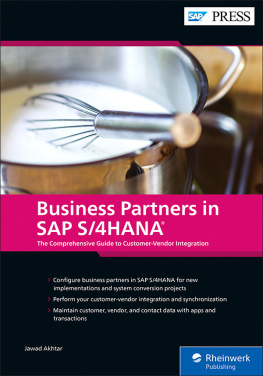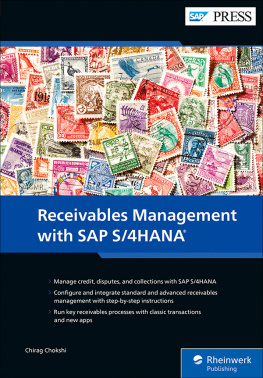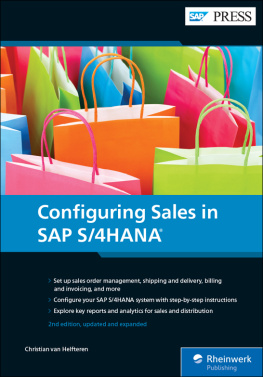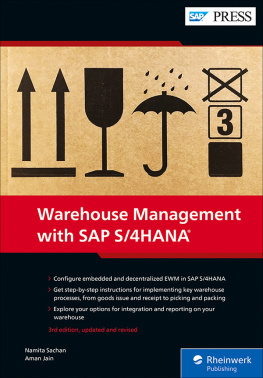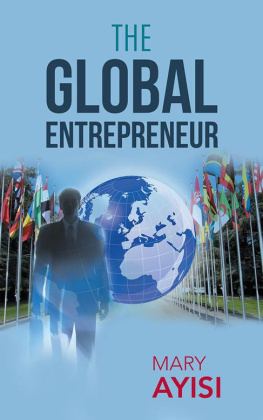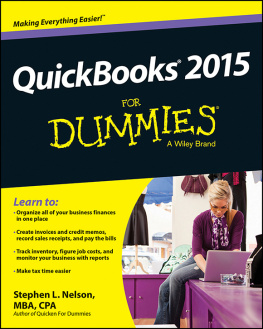We hope that you liked this e-book. Please share your feedback with us and read the to find out how to contact us.
Dear Reader,
As an editor, my job requires a lot of attention to detail. The best gift I can receive is an author who shares that same attention to detailand in some cases, surpasses it!
With this book, I got three. Throughout my time working with them, Matthias Niessen, Heather Reina, and Mark Travers have proven themselves to be not only a hardworking team of authors, but a meticulous one. They're constantly improving their work, are quick to implement my feedback, and ensure that the book they deliver is up to the highest of standards. Their dedication to making this book the best it could possibly be, while staying organized, communicative, and highly motivated, made them an incredible team from start to finish.
The best part? They didn't just make my job easierthey want to make yours easier, too. With step-by-step configuration instructions and real-world guidance on implementing workflows, running reports, and posting and approving documents, this book is your answer to complicated, confusing, or frustrating vendor invoice management processes. I hope you find value in their work and can use it to improve accounts payable for all parties involved.
What did you think about Vendor Invoice Management with SAP ? Your comments and suggestions are the most useful tools to help us make our books the best they can be. Please feel free to contact me and share any praise or criticism you may have.
Thank you for purchasing a book from SAP PRESS!
Rachel Gibson
Editor, SAP PRESS
www.sap-press.com
Rheinwerk Publishing Boston, MA
Notes on Usage
This e-book is protected by copyright . By purchasing this e-book, you have agreed to accept and adhere to the copyrights. You are entitled to use this e-book for personal purposes. You may print and copy it, too, but also only for personal use. Sharing an electronic or printed copy with others, however, is not permitted, neither as a whole nor in parts. Of course, making them available on the internet or in a company network is illegal as well.
For detailed and legally binding usage conditions, please refer to the section .
This e-book copy contains a digital watermark , a signature that indicates which person may use this copy:
Notes on the Screen Presentation
You are reading this e-book in a file format (EPUB or Mobi) that makes the book content adaptable to the display options of your reading device and to your personal needs. Thats a great thing; but unfortunately not every device displays the content in the same way and the rendering of features such as pictures and tables or hyphenation can lead to difficulties. This e-book was optimized for the presentation on as many common reading devices as possible.
If you want to zoom in on a figure (especially in iBooks on the iPad), tap the respective figure once. By tapping once again, you return to the previous screen. You can find more recommendations on the customization of the screen layout on the .
Introduction
In a modern business environment, buying goods and services is a mundane task. Perfecting this task quickly turns into a competitive advantage. However, not all companies take full advantage of this optimization. The end-to-end process involves many people and skills: Identifying the best source of supply is an interesting and creative task, supervising delivery schedules and quality is routine work, and verifying and paying invoices is kind of tedious and boring. Verifying and paying invoices falls into the remit of the accounts payable (AP) team. Being at the end of the chain, they need to live with the decisions made earlier, which sometimes result in incomplete or poorly maintained data, violations of corporate policies, and lackluster quality and poor formatting in the invoices vendors submit. Consequently, the relationship between the finance and procurement team is not always the best. From an AP perspective, sometimes, awarding the second-best supplier is desirable if that vendor better integrates with your corporate processes and allows for frictionless operations. In return, the procurement team may accuse the finance team of being too strict and even risking relationships with key vendors. Modern technology may remedy this divide: When both teams share insights and reports, procurement can make better decisions and recommend their preferred suppliers to meet invoicing requirementsand the AP team better understands why certain suppliers are critical for corporate success.
This example illustrates well how the availability of information turns into an advantage. Think about it: Doesnt this use of information also apply to collaborations with other departments? Engineers planning complex buildings or machinery, service technicians who maintain equipment, and sales specialists who answer complex requests all need to access and share information with and from the other departments. Once started, the digital transformation will not stop. Employees demand similar ease of access to information after they see the benefits through a simple example like collaborating on an invoice approval. Well expand on this important aspect in the next section and then focus on the modernization of AP in particular. Finally, well conclude with the bigger picture to see how all of these factors come together.
The Synergies of Digital Transformation
The effectiveness of digital technology, combined with the changing lifestyle of Generation Z (born mid-1990s to the early 2010s), has disrupted traditional businesses. Many products have vanished, and the interaction between producers and consumers has become digital. Companies with a high level of digitalization had much better chances weathering the COVID-19 pandemicothers had to scramble to find ways to engage with customers who could no longer meet in physical locations and had to find ways to make accommodations for the employees working from home. Many of these innovations will persist to help in developing new business models.
Digital transformation means much more than just removing paper from collaboration processes. Having a digitally optimized business allows you to share information with hundreds (if not millions!) of users with ease. The systems managing the information know who accessed that information and can use that knowledge to predict future demand and to continually improve the quality of information. This feedback loop leads to more efficiency in communications with business partners and improves their trust and satisfaction. An important prerequisite is that all corporate systems must connect to the same pool of information. In this way, you can create a single source of the truth, providing real-time transparency.
Next are the business processes: People need to interact with the information, and they must react to external events such as customer questions, alarms from malfunctioning devices, or reports indicating significant changes in a key performance indicator (KPI)to name just a few. Processes are an integral part of daily operations, and users, or even systems, will create additional information while working on associated tasks.




